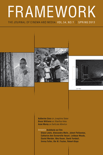
Framework-The Journal of Cinema and Media
Scope & Guideline
Engaging with contemporary debates in film.
Introduction
Aims and Scopes
- Cinematic Analysis and Critique:
The journal emphasizes in-depth analysis of films and media, exploring their narrative structures, thematic elements, and cultural contexts, particularly through the lens of notable filmmakers such as Pier Paolo Pasolini. - Interdisciplinary Approaches:
It adopts an interdisciplinary perspective, incorporating insights from film theory, cultural studies, and political discourse, thereby enriching the understanding of cinema as both an art form and a medium of social commentary. - Archival Research and Historical Contextualization:
There is a strong focus on archival research, examining the historical trajectories of film movements like New American Cinema, and how these movements have influenced contemporary cinema and media practices. - Social and Political Engagement:
The journal addresses the role of cinema in social movements and political activism, highlighting how film can act as a vehicle for resistance and cultural expression in various geopolitical contexts. - Exploration of Marginalized Voices:
It prioritizes the representation and analysis of marginalized perspectives in cinema, including discussions on race, gender, and identity politics, thereby fostering a more inclusive discourse within film studies.
Trending and Emerging
- Explorations of Queer Cinema:
Recent publications highlight the intersection of queer theory and film studies, particularly through the works of filmmakers like Pasolini, which underscores the growing importance of LGBTQ+ narratives in cinema. - Activism and Community Engagement:
There is an increasing focus on cinematic activism and the role of film in social movements, particularly during the pandemic, showcasing how cinema can foster community solidarity and political engagement. - Global Perspectives on Film:
Emerging themes include a broader exploration of global cinema, particularly from underrepresented regions, emphasizing the significance of diverse narratives in understanding the global film landscape. - Digital Media and New Platforms:
The journal is beginning to explore the impact of digital media and streaming platforms on film consumption and community building, reflecting the changing dynamics of how audiences engage with cinema. - Feminist and Gender Studies within Film:
There is a rising interest in feminist film theory and critiques of gender representation in cinema, indicating a shift towards more nuanced discussions about gender and power dynamics in film.
Declining or Waning
- Traditional Film Criticism:
There seems to be a decline in conventional film criticism that strictly evaluates films based on aesthetic standards, with more emphasis now placed on sociopolitical contexts and activist cinema. - Focus on Mainstream Cinema:
The journal has gradually shifted away from discussions centered on mainstream Hollywood cinema, reflecting a broader interest in alternative, experimental, and global cinema that often critiques dominant narratives. - Historical Accounts of Cinema:
There has been a noticeable reduction in purely historical accounts of film movements without critical engagement, as the journal now favors analyses that connect historical cinema with contemporary issues and discourses. - Purely Theoretical Approaches:
Theoretical discussions that do not engage with practical examples from film or media have become less prevalent, as the journal moves towards more applied and case study-oriented research. - Focus on Technical Aspects of Filmmaking:
There is less emphasis on the technical aspects of filmmaking, such as cinematography or editing techniques, as the journal increasingly prioritizes thematic and socio-cultural analyses.
Similar Journals

Studies in Russian and Soviet Cinema
Chronicling the Evolution of Film in SocietyStudies in Russian and Soviet Cinema, published by Routledge Journals, Taylor & Francis Ltd, provides a critical forum for the exploration and analysis of cinematic practices, histories, and cultures from the Russian and Soviet eras. With its ISSN 1750-3132 and E-ISSN 1750-3140, this journal operates under the editorial guidance of leading scholars in the field, making significant contributions to the Visual Arts and Performing Arts and Communication categories, where it is ranked in the upper quartiles of its peer group. The journal spans a rich period of study, converging insights from 2006 to 2024, thereby allowing for an in-depth understanding of the evolution and impact of cinema in societal narratives. Researchers and enthusiasts alike will appreciate its dedication to illuminating the often-neglected cinematic treasures of Russia and the Soviet Union, promoting scholarly discourse through its rigorous analyses and diverse range of articles. This journal serves as an essential resource for anyone interested in the intersections of film, culture, and history.
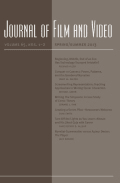
JOURNAL OF FILM AND VIDEO
Cultivating Critical Discourse in the Visual ArtsThe JOURNAL OF FILM AND VIDEO, published by University of Illinois Press, is a pivotal academic platform that delves into the intricate intersections of film, video, and media studies. With a notable ISSN of 0742-4671 and E-ISSN 1934-6018, this journal has established itself as a significant contributor to the visual arts and performing arts field, currently positioned in Q3 of its category as per the 2023 quartiles. Spanning from 2002 to 2024, it presents a comprehensive array of research, critiques, and theoretical discussions that advance scholarly discourse in film and video. The journal encourages contributions that explore innovative narratives and methodologies, catering to a diverse readership of researchers, professionals, and students alike. While it maintains a traditional subscription model and is not open access, its impact is amplified through its Scopus ranking, holding the 323rd position out of 667 in the visual arts and performing arts category. With its commitment to fostering critical conversations and promoting scholarly excellence, the JOURNAL OF FILM AND VIDEO remains an essential resource for those invested in the study and understanding of film and media.
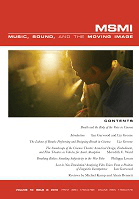
Music Sound and the Moving Image
Unraveling the Ties Between Music and MediaMusic Sound and the Moving Image is an esteemed journal published by Liverpool University Press, focusing on the intricate relationships between music, sound, and the moving image. Since its inception, the journal has aimed to foster a multidisciplinary discourse, engaging scholars and practitioners across the fields of musicology, media studies, and visual arts. With an ISSN of 1753-0768 and an E-ISSN of 1753-0776, it has solidified its presence in the academic community, evidenced by its diverse impact reflected in Scopus rankings, including Rank #63/180 in Music and Percentile 65th. The journal's classification in Q3 for Music and its active coverage from 2018 to 2024 enhances its relevance, making it a pivotal resource for researchers and creators who explore the dynamic interplay of sound and imagery. Although currently not available as Open Access, the journal offers a robust platform for peer-reviewed articles, contributing to the advancement of knowledge in this rapidly evolving field.

MEXICAN STUDIES-ESTUDIOS MEXICANOS
Uncovering the Layers of Mexican History and CultureMEXICAN STUDIES-ESTUDIOS MEXICANOS, published by University of California Press, is a distinguished journal that explores critical issues in the fields of cultural studies and history, with a keen focus on Mexican and Latin American contexts. Established in 1985, this journal serves as an invaluable platform for researchers, professionals, and students alike, aiming to deepen understanding of Mexico's complex social, cultural, and historical landscapes. With an impressive placement in the Q2 category in both Cultural Studies and History, it ranks within the top tiers of scholarly discourse, demonstrating a strong impact factor that reflects its significance in the academic community. Although it does not currently offer Open Access, the journal remains committed to delivering high-quality, peer-reviewed research that stimulates ongoing debates and enriches scholarship in the humanities and social sciences. Nestled at the heart of scholarly conversations, MEXICAN STUDIES-ESTUDIOS MEXICANOS continues to play a pivotal role in advancing academic inquiry into Mexico's past and present.

Hrvatski Filmski Ljetopis
Illuminating the Art of Filmmaking.Hrvatski Filmski Ljetopis, published by the Croatian Film Clubs Association, serves as a pivotal academic journal in the field of film studies, celebrating and analyzing the rich cinematic heritage of Croatia and beyond. With an ISSN of 1330-7665, this journal caters to researchers, practitioners, and students who are passionate about the art of filmmaking, encompassing both theoretical discourse and practical implications. Although it is not currently available as an open-access publication, its curated content is of significant value to anyone interested in the evolution, critique, and history of film in a Croatian context, having previously been indexed in Scopus until coverage was discontinued. The journal operates out of Zagreb, Croatia, at the Croatian Film Clubs Association headquarters, and aims to foster scholarly dialogue while contributing to the broader field of national and international cinematography.

Cinema-Journal of Philosophy and the Moving Image
Challenging Conventions in Film through Philosophy.Cinema: Journal of Philosophy and the Moving Image is a distinguished open-access journal dedicated to the critical analysis of cinema through the lenses of philosophy and cultural theory. Published by the esteemed New University of Lisbon's IFILNOVA - Nova Philosophy Institute, this journal has been a crucial platform for the dissemination of innovative and interdisciplinary research since its establishment in 2010. With an ISSN of 1647-8991 and a significant presence in both Communication and Visual Arts categories, it currently holds a Q4 ranking in 2023, reflecting its growing role in the academic discourse of its field. While the journal has a modest impact as indicated by its Scopus rankings, it serves as a vital resource for researchers, professionals, and students interested in the intersection of philosophy and the moving image, fostering rich dialogues about cinema's impact on society and culture. Situated in Portugal, Cinema invites submissions that challenge conventional perceptions, engaging with both contemporary and historical contexts of film and imagery, thereby playing an essential role in expanding the horizons of film studies.

POSITIF
Transforming Perspectives in the Dynamic Arts CommunityPOSITIF is a distinguished journal, published by POSITIF EDITIONS, focusing on the dynamic fields of Visual Arts and Performing Arts. With ISSN 0048-4911, this journal has been a significant contributor to the arts community since its establishment in 2002, and it continues to captivate readers with its upcoming issues projected until 2024. Based in the heart of France at 12 RUE PIERRE ET MARIE CURIE, 75005 PARIS, POSITIF serves as an invaluable platform for researchers, professionals, and students alike, promoting innovative discourse and critical analysis within the arts. Despite holding a Q4 category ranking in the 2023 classification and a Scopus rank of 637/667, its commitment to enhancing the understanding and appreciation of visual and performing arts remains steadfast. Researchers are invited to contribute to this growing body of knowledge, enriching the journal's scope and impact in a vibrant artistic landscape.
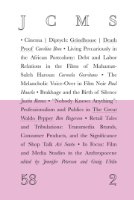
JCMS-Journal of Cinema and Media Studies
Engaging with the Dynamics of Contemporary MediaJCMS-Journal of Cinema and Media Studies, published by University of Texas Press, stands as a vital platform for scholars and practitioners in the realms of cinema, media, and visual arts. With an ISSN of 2578-4900 and an E-ISSN of 2578-4919, the journal has been a part of the academic landscape since its inception in 2018 and will continue to contribute valuable research until 2024. Notably ranked in the top tiers of Scopus, securing Q1 status in Visual Arts and Performing Arts and Q3 in Communication, JCMS features articles that critically engage with both traditional and contemporary issues in media studies. Located in the United States, the journal is committed to providing open access to a wide array of interdisciplinary research, fostering dialogue among researchers, students, and media professionals. By serving as a nexus for innovative scholarship and creative discourse, JCMS enriches our understanding of cinematic and media practices and their impact on society today.

Transnational Screens
Transforming Perspectives on Art and Communication WorldwideTransnational Screens is a premier academic journal published by Taylor & Francis Ltd, focusing on the dynamic intersections of visual arts, performing arts, and communication in a globalized context. Since its inception, the journal has garnered significant recognition, featuring in the Q1 category for Visual Arts and Performing Arts and Q3 for Communication as of 2023, reflecting its influential contributions to these fields. With a Scopus ranking placing it in the 78th percentile in Visual Arts and Performing Arts, this journal serves as a vital platform for researchers, professionals, and students aiming to explore the implications of transnational narratives in contemporary media and artistic practices. The journal is accessible to a diverse readership and promotes open dialogue through its commitment to publishing innovative and interdisciplinary research from 2020 to 2024. As a key resource for understanding the complexities of transnational screens, it invites submissions that push the boundaries of traditional scholarship and engage with pressing global issues through the lens of the visual and performing arts.
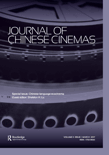
Journal of Chinese Cinemas
Illuminating the Cultural Tapestry of Chinese FilmThe Journal of Chinese Cinemas, published by Routledge Journals, Taylor & Francis Ltd, is a leading platform dedicated to advancing the field of film studies with a focus on cinema from China. With an ISSN of 1750-8061 and an E-ISSN of 1750-807X, this journal provides a comprehensive examination of the cultural, social, and political dynamics inherent in Chinese cinema. Ranked in the Q3 category for Communication and Q1 for Visual Arts and Performing Arts in 2023, it stands out in the academic landscape, particularly noted for its innovative research and diverse discourse. It holds a respectable position in Scopus rankings, coming in at #219 within Visual Arts and Performing Arts, indicating its growing impact among scholars and practitioners alike. With its commitment to publishing high-quality research from 2012 onwards, the journal serves as an essential resource for researchers, professionals, and students eager to deepen their understanding of the evolving landscape of Chinese cinema.